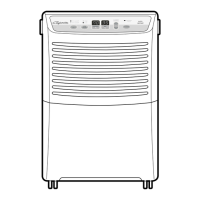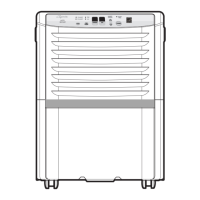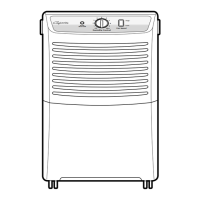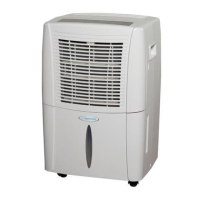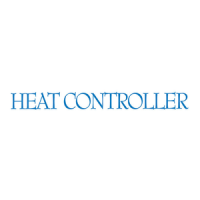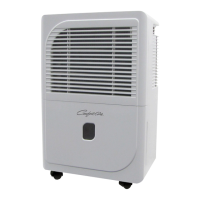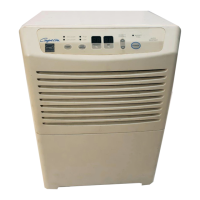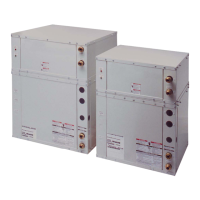Do you have a question about the Heat Controller BHD-501-G and is the answer not in the manual?
Safety guidelines for servicing the unit, including unplugging power and insulation resistance testing.
Lists key features of the dehumidifier, such as auto-defrosting, wide temperature range, and LED display.
Identifies the location of controls and indicator lights on the unit's panel.
Guidance on installing the portable dehumidifier in a suitable location, ensuring proper airflow.
Specifies the optimal environmental conditions for operating the dehumidifier.
Instructions for powering the unit on/off and details on using the internal water tank.
Instructions for connecting a drain hose for continuous condensate removal.
General maintenance precautions and procedures for cleaning the unit, air filter, and water tank.
Describes the self-diagnosis process and initial state when the unit is powered on.
How to adjust humidity settings and how the compressor/fan operate based on humidity levels.
Explanation of the continuous mode, setting to 35% humidity, and fan operation.
Process for turning the unit off, including defrost cycles and self-diagnosis upon restart.
Details the 3-minute time delay for compressor restart to prevent damage.
Explains various protection mechanisms like water full, anti-icing, and sensor failures.
Procedures for testing compressor windings, ground, and checking efficiency.
Explanation of external thermal overload protection and its causes.
How to test the external terminal overload for continuity.
Description of internal overload protection and how to check it.
Lists required equipment and capabilities for refrigerant system repairs.
Procedures for replacing components within the sealed refrigeration circuit.
Steps for recovering refrigerant, removing components, flushing, and reassembling after burnout.
Specific troubleshooting tips for rotary compressors, focusing on mounts and terminals.
Critical steps and methods for accurately charging the refrigerant into the system.
Description of the fan motor and procedures for testing its operation at different speeds.
Description of the run capacitor and its role in motor operation.
Classifies general troubles and lists room air conditioner voltage limits.
Identifies and explains possible PCB fault codes such as P1, P2, E1, and E2.
Troubleshooting abnormal water level protection functions, like false alarms or no alarms.
Details causes and indicators for automatic trouble alarms, such as sensor failures.
Flowchart for diagnosing issues related to the pipe temperature sensor.
Steps to diagnose humidity display failures and sensor issues.
Diagnostic flowchart for issues preventing the motor from starting.
Steps to diagnose and resolve abnormal noises originating from the unit.
Lists common complaints, their causes, and recommended remedies.
| Product color | White |
|---|---|
| Water tank capacity | 10 L |
| Water level indicator | Yes |
| Suitable for room area up to | 232 m² |
| Suitable for room volume up to | - m³ |
| Depth | 321 mm |
|---|---|
| Width | 394 mm |
| Height | 622 mm |
| Weight | 17690 g |
